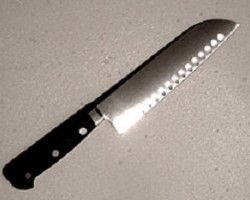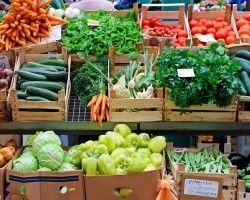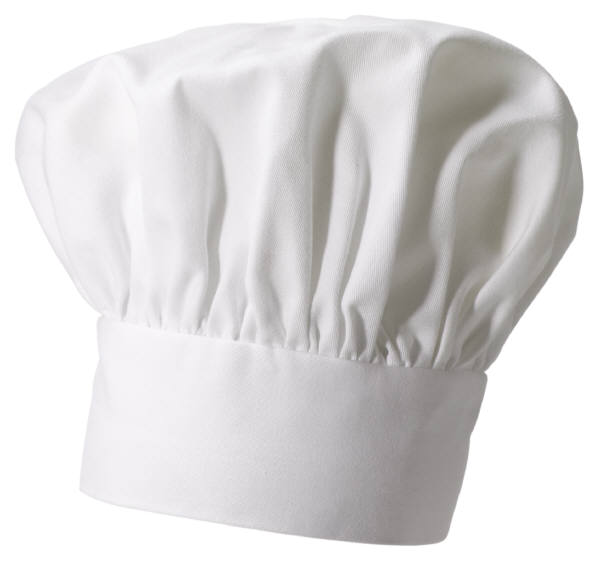Ever have food poisoning? I contracted it at a highly-respectable restaurant on my 30th birthday no less. Then, I got it again, this time at the home of a friend from high school whom I hadn’t seen for years. She was so embarrassed by the whole ordeal (all of the guests got sick) that she basically avoided me for months after that. I had to be the one to reach out, LOL.
Anyway…
Whether you’re a professional chef or a home cook, I’m sure you can agree proper handling of food is essential to keeping everyone healthy and making sure we all remember our dining experiences, uh, favorably.
And pros, did you know being lax in your safety and sanitation practices can lead to more than sick guests and (understandably) bad reviews. Just this year a 46 year old mother contracted food poisoning from improperly cooked turkey and died. Ultimately, it led to jail time for this chef and restaurant manager in the UK. So let’s review a few things and maybe we might learn a thing or two too!
#1) Leftovers are Good Only Once
Along with keep the hot stuff hot and the cold stuff cold, did you know leftovers should only be reheated once? Reheated food is susceptible to bacteria. Reheating once is fine (food should be reheated until it is steaming hot). After that, toss it.
The more times food is reheated or chilled food is tempered to room temperature, the greater the potential for food poisoning since bacteria can multiply every time food is cooled and/or reheated.
Depending on the kind of bacteria, the symptoms associated with food poisoning can present themselves anywhere between 1-2 hours after consumption to three days or longer (symptoms of Salmonella sickness generally take 72 hours to appear).
#2) Rice is NOT Nice after 2 Days
Leftover rice should be eaten within 24 hours after cooking. Rice can contain a very resilient kind of bacteria, bacillus cereus which can survive reheating, even the fryer won’t kill it.
#3) The US Consensus on Washing Poultry and Meat

Contrary to the longstanding habit with many home cooks, the USDA now advises NOT to wash poultry and meat prior to cooking. For those of us who are accustomed to washing it (including me) the experts now advise us to blot with paper towels. Proper cooking will kill any bacteria. I believe the UK still recommends cooks wash their poultry under running water prior to cooking while making sure not to splash and contaminate surrounding areas or clothing.
#4) That Hand Towel is FULL of Bacteria
Just think of how often that single green, red, or striped hand towel get grabbed to dry your hands, maybe grab a pot, dry and dish, etc. Chances are it’s loaded with bacteria. Prior to cooking, grab a fresh hand towel and use it specifically for drying your hands immediately after washing. Use different colored towels or paper towels for cleaning up.
#5) Cutting Boards –Keep them Clean, Separate and New
Have you seen those packs of colored cutting boards? There’s a reason. At the minimum, you should have one cutting board for fruit and vegetables, another for raw meat and poultry and yet another for cooked foods. Should you want to buy a whole set, here’s the lowdown:
Meat: red, Poultry: yellow, Cooked: blue, Seafood: brown, Fruits and Veg: green
Not a fan of plastic cutting boards? No problem. Why not label the handle of that set of wooden boards so you know which is which?
As for keeping your boards clean, it’s best to scrape morsels and remnants straight into the trash, then spray with vinegar, blot dry and spray with hydrogen peroxide. Afterward, plastic cutting boards can be washed with soap and water. Wooden boards should be rinsed with water, spayed again with vinegar, blotted and left to dry propped up in the dishrack so that any excess moisture can drain off. To freshen wooden cutting boards, dust with baking soda and spray with white vinegar and let them fizz for 5 minutes, then rinse with cold water, blot and air-dry.
#6) Knives are to be Respected—Clean and Dry

Next to hands and cutting boards, knives can be big carriers of harmful bacteria. Washing them in hot, hot water and soap making sure to get into the serrated bits as well as where the blade meets the handle and drying with a clean towel will greatly minimize the chances of spreading anything harmful around.
#7) How to Get Your Helpers to Fall In-Line
This can be tricky, especially around the holidays when you’ve got well-intentioned guests willing to help. I’ve found a somewhat humorous statement like, “I’m a drill sergeant when it comes to the kitchen” right at the onset and is all I need to say to then get on to telling my sous-chefs exactly how to help me. I might also say something like, “This cutting board for vegetables only,” then I show them where to wash their hands and create a space for them, limiting their chances of roaming. Believe it or not, ample instruction and a place to work without being bothered usually makes for happy helpers. For guests who are more interested in socializing, I suggest setting them up at that table on the far side of the kitchen with a bottle of wine and a few good magazines.
#8) Rinse All Produce

If you rinse your produce prior to putting it in the fridge, you’ll find it goes bad much quicker. Nevertheless, all produce, even that cantaloupe melon, needs to be rinsed prior to use. Make sure not to set an unwashed melon or cucumber onto a cutting board. Instead, rinse under cool running water, blot dry and then get to slicing.
#9) A Meat Thermometer is Essential

Think a meat thermometer is just for the pros? Think again. A good, digital thermometer is essential for everyone who cooks. Get into using it and yes, keep it clean and sanitized too. Grab
this chart and post it somewhere prominent in your kitchen. I promise you, it’ll save you so much time and worry!
FOR THE PROS:
#9) A Great Safety and Sanitation Policy Means Nothing…

If your staff doesn’t fall in line and take it seriously, even at 2am when they’re all alone in the kitchen and no one is watching them. All kitchen safety and sanitation guidelines will fail miserably if employees to not adhere to the practices set in place. Lax staff members, persons who like to take shortcuts can be offenders since their focus is on saving time, not necessarily being safe. Persons who clean and transport dishes around the kitchen and chefs and cooks who work more than one station can be trackers. Clean uniforms and a strict policy against coming to work with a cold or flu and proper oversight of flow can greatly limit or persons who work between stations are often the worst offenders.
#10) Cleaning the Big Stuff
Take a look at all the nooks and crannies in kitchen equipment, the meat grinder has a catch that needs proper sanitizing, the blender has blades and an washer and without proper cleaning you’re going to get disgusting, rotten bits of food in every new sauce or soup you blend up (super yuck!). Check out that crevice on top of the dough hook, the blades and safety guard on the slicer, all of these areas can house particularly nasty bacteria. Larger pieces of equipment like fly fans, walk-in motors and fans and any out of the way, hidden areas can become storehouses of bacteria. Cleaning lists, cleaning days, fresh rags and antibacterial cleaning products and a good rinse are important. People can also get sick from soap and cleanser residue. Dishwashing machines that do not properly load, rinse and drain can result in dirty dishes and a shut-down restaurant.
#11) Rotation, Rotation, Rotation
Whether it’s stickers with days of the week and a numerical date, or good ol’ masking tape and sharpie marker, clearly labeled and rotated stock is oh so important. Spot checks are the only way to ensure everything is rotated, always and forever more.
#12) Color-coded Everything
Along with the color-coded cutting boards which are commonplace in most professional kitchens these days, are color coded towels and buckets. At my last kitchen job, white towels were for chefs only, yellow for food spills, light green for general cleaning of countertops, blue towels with a green stripe were for in-depth cleaning of the various areas.
By no means is this list exhaustive! Here’s a slew of tips to check out at the Food Safety website!
Here’s to Happy and Healthy Eating Everyone!!!





